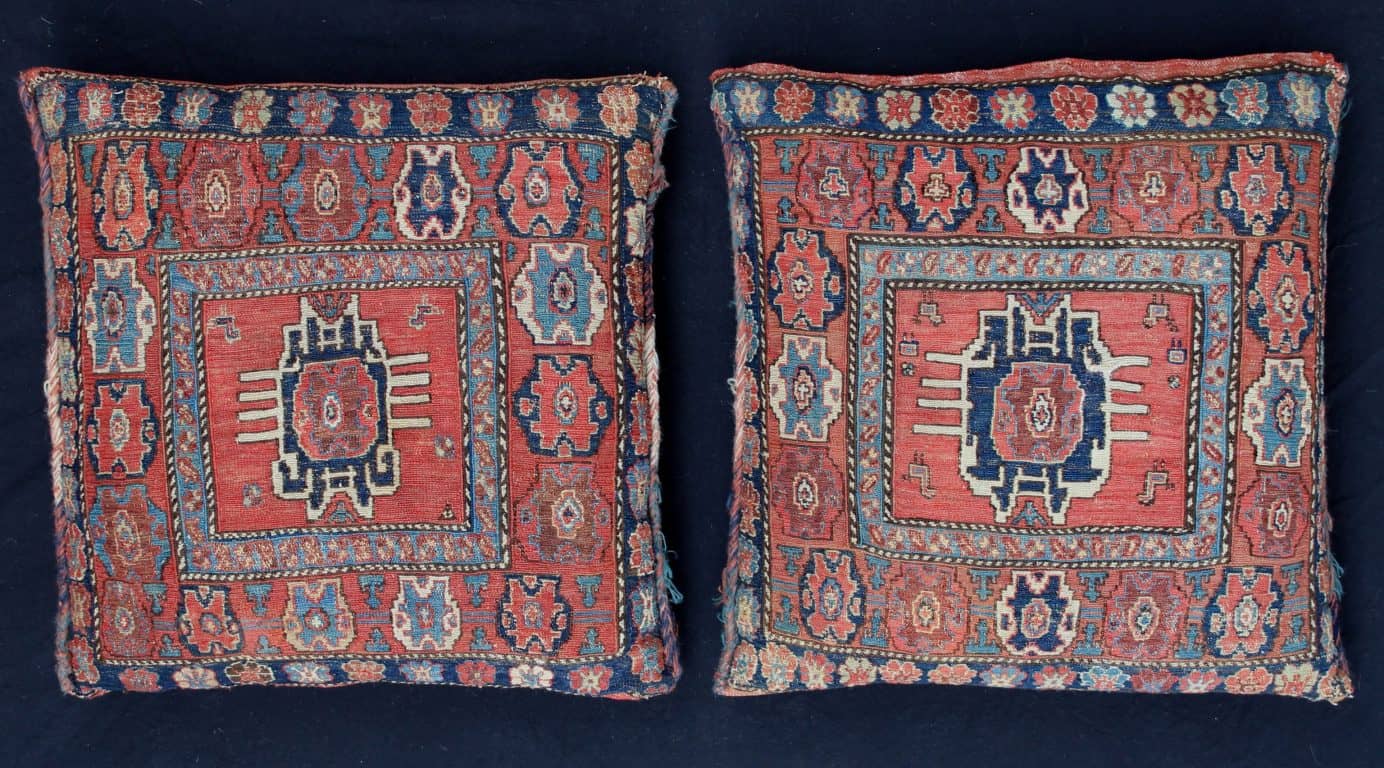Pair of 19th-century Northwest Persian Soumakh Bags
SOLD
Pair of 19th-century Northwest Persian Soumakh Bags
reference:
6933/6934
dimensions:
62 x 64 cm each
Description
These northwest Persian Soumakh bags from the 19th century almost certainly come from the Khamseh or Garrus area to the south of Persian Azerbaijan. They were originally made in one piece and served as a Khorjin (double sided bag), that is: a saddlebag. They were made by a member of a Shahsavan tribal subgroup practising migration between the winter camp and summer pastures. There must have been a certain degree of prosperity among these groupings, which is reflected in the quality of the weavings from this area.
The wool Soumakh on the face of the bags has a ‘Lesghi star’ motif in the centre of a plain, square field with a bird in each corner. This is enclosed by multiple small borders and a main border with a chain of smaller ‘Lesghi stars’, followed by another guard stripe and then an outer border with a chain of flower heads. The borders go all around the central field on all four sides.
According to John Wertime, this is the most common type of bag from the Khamseh area (see Wertime, John T., Soumak Bags of Northwest Persia & Transcaucasia. London, Laurence King Publishing in Association with Hali Publications Ltd `1998, page 74. The bag illustrated on this page and dated to the third quarter of the 19th century is very similar to our examples, though it is held in a slightly stronger colour scheme than the soft, almost pastel colours in our bags).
The kelim on the back of the bag in a warm, earthy red derived from the madder root is woven over two warps, which is a phenomenon also found in Bidjar kelims. This is not surprising since Bidjar lies in the Garrus area and is adjacent to Khamseh.
Overall, the bags, which have been made into cushions, are in good condition.
SOLD

